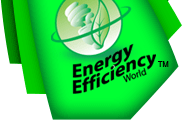 The experiment, Make a Mini Greenhouse, appears in the section “Help
the Environment.”
The experiment, Make a Mini Greenhouse, appears in the section “Help
the Environment.”
Materials
Students will need the materials listed on the website:
- Two large glass bottles or jars of the same size
- One piece of plastic wrap (or a recycled plastic bag)
- One rubber band
- Four ice cubes, all the same size
- Optional: two thermometers that will fit inside the bottles
- A printout of this experiment
- A pencil
Objective
This experiment will help students understand how the greenhouse
effect works. Students will learn that the greenhouse effect is
the rise in temperature that the earth experiences because
certain gases in the atmosphere trap heat energy from the sun.
The students should understand that the plastic wrap holds the
heat in the bottle just as the clear greenhouse gases trap heat
in the earth’s atmosphere.
Getting It Across
Have students read the information and follow the steps on the
page. Students may assume that the uncovered bottle will let in
more sunlight, thus predicting that temperatures will be higher
and the ice will melt faster in this bottle. Allow this type of
prediction without correcting it, as students will learn otherwise
during the course of the experiment.
Questions and Answers
Discuss students' predictions and why they were correct or not correct.
- Did one bottle of ice melt faster than the other? Why? (The covered bottle of ice should have melted faster than the uncovered bottle because the plastic traps the heat inside the bottle.)
- How are your observations related to the transfer of radiant energy? (Radiant energy from the sun was transferred to the ice through the plastic.)
- How are your observations related to the greenhouse effect? (The plastic wrap over the top of the bottle is like the layer of greenhouse gases in our atmosphere that are trapping heat from the sun.)
Analysis
When fossil fuels are burned to produce energy, gases such as
carbon dioxide, methane, and ozone are released into the atmosphere.
Without these gases, heat would escape back into space. These
gases act like a thin film, or greenhouse, that keeps heat from
the sun inside our atmosphere. As human activity has added more
greenhouse gases to our atmosphere, the earth’s climate
has become gradually warmer, resulting in “global warming.”
Global warming can cause glaciers to melt, increasing sea levels.
It can cause extreme weather, droughts, and floods. It can alter
plant and animal habitats, forcing animals to move or die out.
Hotter and colder temperatures, and then the need for more energy
use, will also affect humans.
So no matter what resources your energy comes from, using energy
efficiently at home, at school, and on the road is a very good
way to reduce greenhouse gases and help our planet stay healthy.



